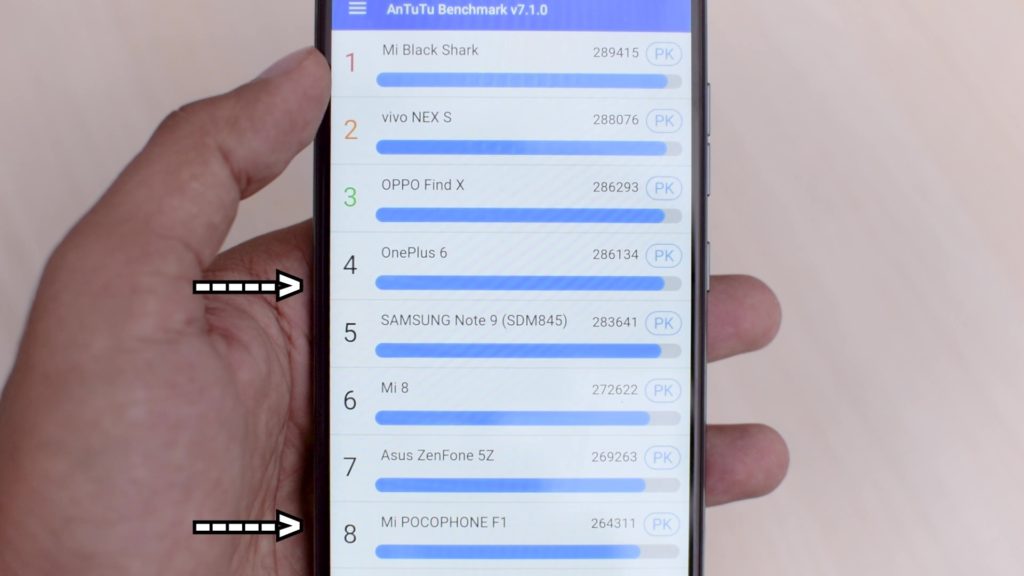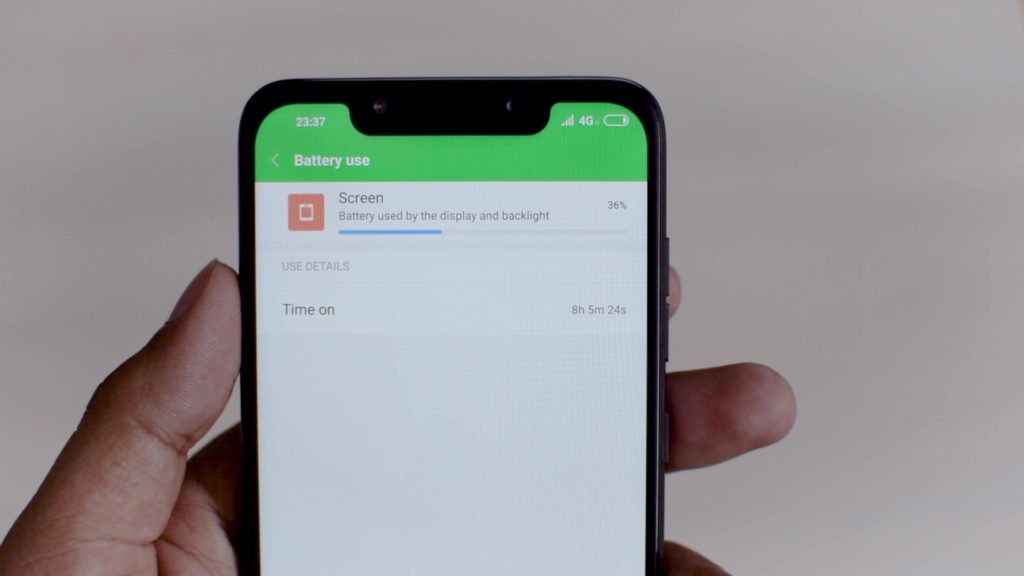It was year 2015, and I bought Xiaomi’s first phone in India, their Mi 3 at 14,000 Rs., a price which was unheard of for a snapdragon 800 device. Time went on, and the flagship killers kept getting more expensive, and even brands like Oneplus couldn’t decide if they were a budget smartphone brand.
Enter the Pocophone F1, a device that brings back the loco value for money that Xiaomi started getting known for, and we are going to see if this phone delivers to the hype. The OnePlus 6 has been my daily driver for some time, so I am going to share my thoughts on how much of a compromise I felt the Poco F1 was, in the 1 week I used this phone for.
DESIGN
While every other company is running towards glass to make their phones look premium in product images, the pocophone proudly embraces plastic, and for many practical reasons, I find this choice to be really great. This is a phone that you can use without a cover.
The phone isn’t very thin, due to it having a massive 4000 mah battery, but power users have been demanding a design like this for time, so I consider it to be a positive.
But I have to say that the overall feel in hand of this phone isn’t very premium, and it does feel like a budget phone. It is a functional design, but the feeling of completeness, and the polish in the design isn’t here, and Xiaomi own phones, even the cheaper ones like the Mi A2 are a notch above in design and feel.
DISPLAY
I am very happy to see that Xiaomi didn’t compromise with the screen. While they had to downgrade from OLED display of the Mi 8, this IPS display is very good, the colors are accurate, with great and balanced level of saturation, the viewing angles are also great, and black levels are also good for an LCD display. And if you are going to use your phone for VR, the LCD panels are actually better.
The display is easy to read in sunlight, and also gets very dim, so you can use it comfortably at night.
You can not only adjust the color temperature, but also shift the colors towards any color in settings with the color spectrum, so I added a slight green shift that I felt was needed.
I don’t like how wide the notch is, or the fact that it looks like an iPhone X, but it is what it is.
FACE UNLOCK
This phone has a dedicated IR illuminator and camera, which is a step up from basic face recognition of phones like oneplus 6, so it also works perfectly in complete darkness. While this isn’t as sophisticated and secure of a system as the iPhone X or Mi 8, it’s still great to have in a device like this. This also works very fast, and at least for me, it’s secure enough to not be a concern.
SOFTWARE
Xiaomi may tell you that this is a sub brand, but they surely cannot part with MIUI. I like MIUI, it looks good and you don’t need to install many 3rd party apps. but don’t prefer it over stock android. This phone will get MIUI 10 soon, and that looks really great.
PERFORMANCE
The Poco philosophy is all about its performance, and the Snapdragon 845 chip inside is the biggest selling point of this phone. So unsurprisingly, performance is as good as any other flagship. After the recent updates, MIUI has got as fast as stock Android, and with 6 GB RAM that this phone has, it runs very well, and there aren’t any lags or delays whatsoever.
This phone is liquid cooled, and that isn’t just a gimmick, I did some VR tests on both phones, which makes my OnePlus 6 very hot. The pocophone also got warm, but it was around half as hot as the OnePlus 6, so the liquid cooling does actually work.
And with the powerful Adreno GPU, and 4000 mAh battery, this is also a very good gaming phone, that will play the best of the Android games available, and it’ll be able to play them for longer, while staying cooler, and of course, it excels at the benchmarks too. This phone really is aimed at enthusiasts.
CAMERA
Pocophone has the same primary sensor as the Mi 8, which means it is very good. While it tries to make images look more colorful instead of natural, the end result is actually good and there is plenty of detail with low levels of noise.
The front camera, which is also the same as the Mi 8, also takes really great shots, and it performs well enough for me to not prefer one of these phones over the other.
The video camera also performs well, and you can actually switch EIS on or off in 1080p, which isn’t possible with OnePlus 6 (explain 3060 fps in text), which I find to be really stupid, even though the OnePlus 6 does 60 fps at 4K compared to 4K at 30 fps of Pocophone.
Portrait mode works, as well as any other flagship phone, and you can also adjust the blur effect after taking the shot, and can also do the iPhone like fake 3D lighting, which has been plaguing the smartphone industry. And I like that they used a 5 megapixel sensor for the secondary camera, which is only used for sensing depth.

The camera on this phone, is not a compromised experience, even though the lack of optical image stabilization does affect the low light shots.
This phone has a very good loudspeaker, the earpiece acts as a second speaker for stereo effect, and while that helps it a little, the speaker driver itself is great and you can easily watch YouTube videos without needing earphones.
BATTERY
The poco phone packs a massive 4000 mah battery, and battery life is unsurprisingly great. With my typical conservative usage, I was able to clock in over 8 hours of screen on time before the battery dropped to 16 percent, so this battery can actually last for 2 days if you have a life, and you don’t waste 5 hours on your phone everyday.
Another great news is that even at this price point, Xiaomi was able to ship a Quick Charge 3.0 charger.
CONCLUSION
So in conclusion, I can say that this phone delivers more than the hype around it. After testing it for my review, I did go back to OnePlus 6 because of it’s AMOLED display, software, dash charging, water resistance, gestures, better overall feel with a much less horrible notch. But switching to OnePlus 6 was also a downgrade in some areas, because the Pocophone has a much better loudspeaker, a microSD card slot which I could really use, it has a significantly longer lasting battery, the face unlock tech is also better, and it also stays cooler in some workloads.
And if I drop my OnePlus 6, I’ll have to go to another state to get it repaired, as OnePlus still doesn’t have a service center in my city, while I’ve had a surprisingly great service center experience with Xiaomi.
So while I prefer the OnePlus 6 overall, the Pocophone definitely didn’t feel like a compromised experience, and when you consider the price difference between these two phones, the Pocophone definitely delivers a loco value for money at 21,000 Rs. It is a phone that is aimed at power users, but it is priced like a mid range phone, and I am very happy that a device like this exists, because this phone will enable a great smartphone experiece for a lot of people, who have enthusiasm for technology, but cannot afford something like OnePlus 6, or just don’t consider the OnePlus 6 to be a good value for money.













